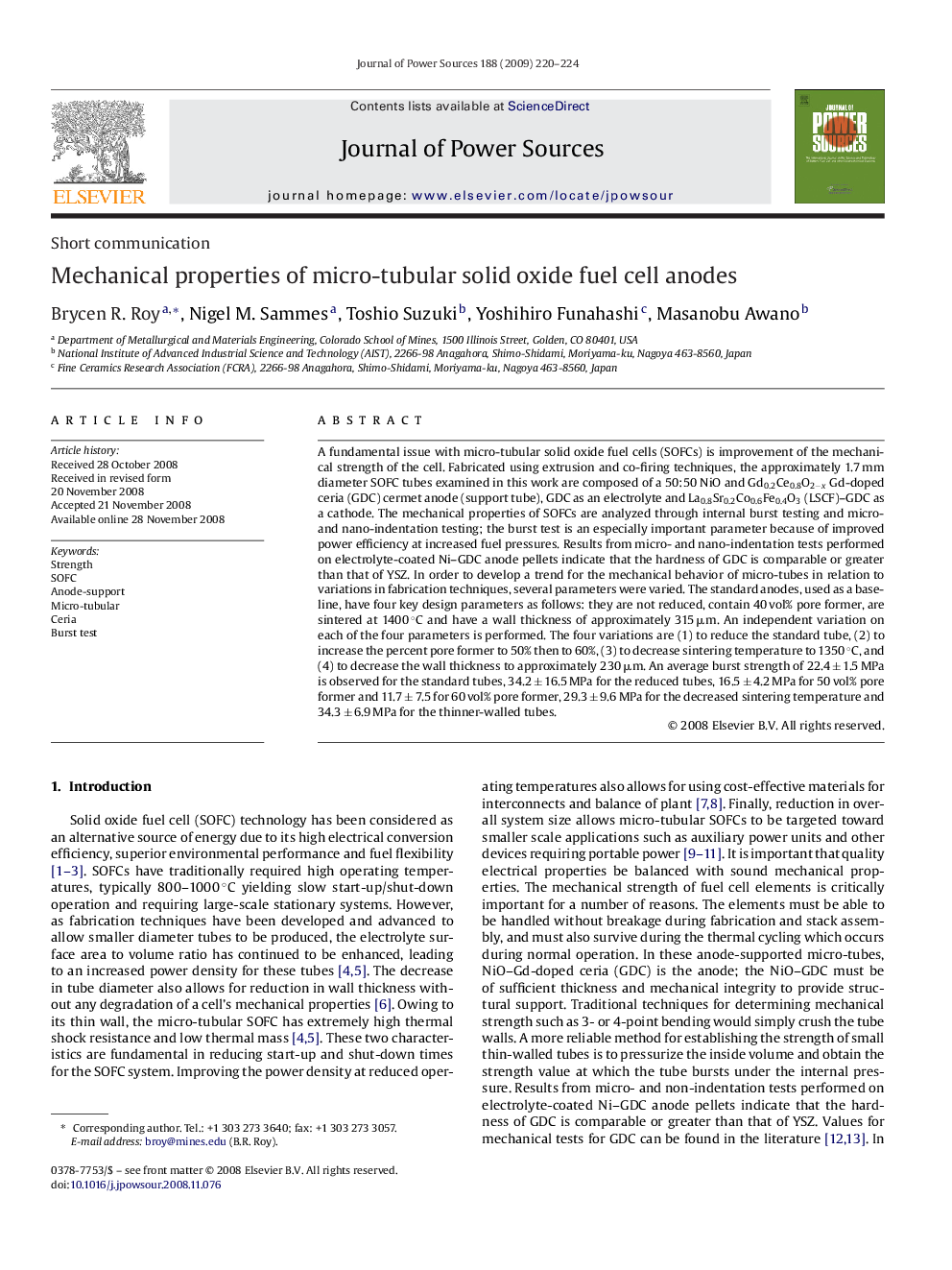| Article ID | Journal | Published Year | Pages | File Type |
|---|---|---|---|---|
| 1294337 | Journal of Power Sources | 2009 | 5 Pages |
A fundamental issue with micro-tubular solid oxide fuel cells (SOFCs) is improvement of the mechanical strength of the cell. Fabricated using extrusion and co-firing techniques, the approximately 1.7 mm diameter SOFC tubes examined in this work are composed of a 50:50 NiO and Gd0.2Ce0.8O2−x Gd-doped ceria (GDC) cermet anode (support tube), GDC as an electrolyte and La0.8Sr0.2Co0.6Fe0.4O3 (LSCF)–GDC as a cathode. The mechanical properties of SOFCs are analyzed through internal burst testing and micro- and nano-indentation testing; the burst test is an especially important parameter because of improved power efficiency at increased fuel pressures. Results from micro- and nano-indentation tests performed on electrolyte-coated Ni–GDC anode pellets indicate that the hardness of GDC is comparable or greater than that of YSZ. In order to develop a trend for the mechanical behavior of micro-tubes in relation to variations in fabrication techniques, several parameters were varied. The standard anodes, used as a baseline, have four key design parameters as follows: they are not reduced, contain 40 vol% pore former, are sintered at 1400 °C and have a wall thickness of approximately 315 μm. An independent variation on each of the four parameters is performed. The four variations are (1) to reduce the standard tube, (2) to increase the percent pore former to 50% then to 60%, (3) to decrease sintering temperature to 1350 °C, and (4) to decrease the wall thickness to approximately 230 μm. An average burst strength of 22.4 ± 1.5 MPa is observed for the standard tubes, 34.2 ± 16.5 MPa for the reduced tubes, 16.5 ± 4.2 MPa for 50 vol% pore former and 11.7 ± 7.5 for 60 vol% pore former, 29.3 ± 9.6 MPa for the decreased sintering temperature and 34.3 ± 6.9 MPa for the thinner-walled tubes.
